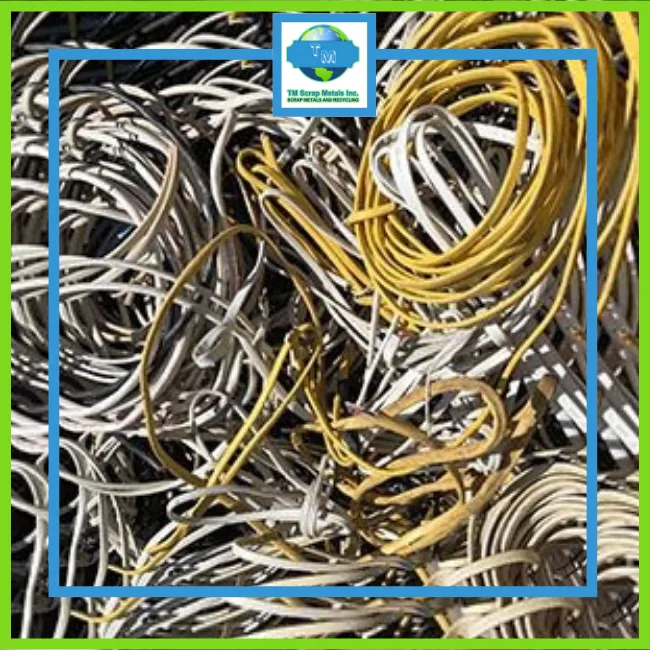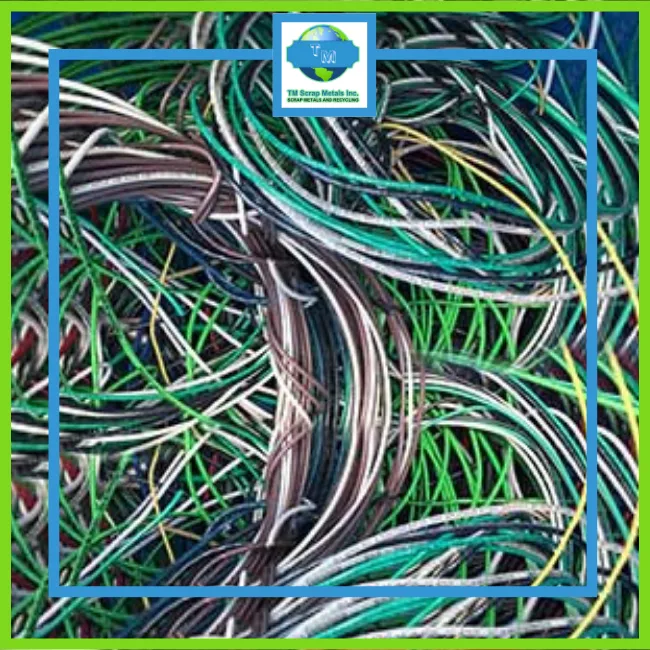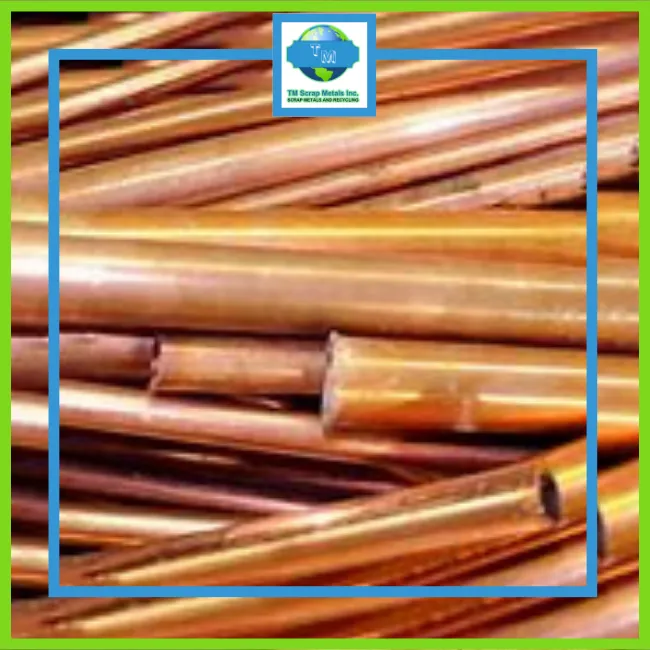Scrap Metals Recycling
Discover Scrap Metals Recycling Centers
Find Your Best Local Scrap Metals
Recycling Center!
Discover top-notch local scrap metal recycling services near you!
Locate the best local scrap metal prices near you today !
Sponsored:
TM Scrap Metals, Inc
Recycling Center

Google: 4.8 stars
Ferrous Metals Recycling, Non-Ferrous Metals Recycling
(818) 771-0510
11092 Tuxford St, Sun Valley, CA 91352
Website: www.tmscrapmetals.com




Huntington Park
Inglewood
Koreatown
La Cañada Flintridge
La Crescenta
Malibu
Marina del Rey
Monterey Park
Moorpark
Pasadena
Reseda
Santa Clarita
Santa Monica
Shadow Hills
Studio City
Tarzana
Universal City
Valley Village
West Hills
West Hollywood
Westwood
Winnetka
The Comprehensive Guide to Scrap Metals Recycling Centers: A Green Solution for Waste Management
In today's rapidly evolving world, the need for sustainable practices has never been more critical. As industries expand and technology advances, so does the production of waste, particularly in the form of scrap metals. This is where scrap metal recycling centers come into play, offering an eco-friendly solution that benefits the environment, the economy, and society as a whole. This article delves into the significance of scrap metal recycling centers, exploring their operations, benefits, and the pivotal role they play in fostering a sustainable future.
Understanding Scrap Metal Recycling
Scrap metal recycling is the process of recovering and processing metals from discarded products, manufacturing waste, or obsolete machinery. These metals, once deemed as waste, are transformed into valuable raw materials through recycling. The process involves sorting, cleaning, melting, and refining metals, making them ready for reuse in various industries.
Types of Scrap Metals
Scrap metals are broadly categorized into two types:
-
Ferrous Metals
These contain iron and are magnetic. Common examples include steel and cast iron. Ferrous metals are widely used in construction, automotive, and manufacturing industries. Despite their strength and durability, ferrous metals are prone to rust, which is why recycling plays a crucial role in preserving their value.
-
Non-Ferrous Metals
These metals do not contain iron and are not magnetic. Examples include aluminum, copper, brass, and lead. Non-ferrous metals are valued for their resistance to corrosion, conductivity, and lightweight properties. They are commonly used in industries such as aerospace, electronics, and plumbing.
The Recycling Process
The recycling process begins with the collection of scrap metals from various sources such as industrial plants, construction sites, and households. These materials are then transported to scrap metal recycling centers, where they undergo several stages of processing:
-
Sorting
The first step involves separating the metals based on their type—ferrous or non-ferrous. Advanced technologies like magnetic separation are used to efficiently distinguish between different metals.
-
Cleaning
Before recycling, metals are cleaned to remove any contaminants such as paint, plastic, or oil. This ensures that the recycled metal is of high quality and free from impurities.
-
Shredding
Large metal objects are shredded into smaller pieces to facilitate easier melting and refining. Shredding also helps in the separation of different types of metals.
-
Melting
The shredded metal is melted in large furnaces at high temperatures. The type of furnace and temperature used depend on the metal being processed. Melting allows the metal to be molded into new shapes or products.
-
Refining
The molten metal is refined to remove any remaining impurities. This step is crucial in ensuring that the final product meets the required quality standards.
-
Solidifying
After refining, the molten metal is cooled and solidified into bars, ingots, or sheets. These can then be used as raw materials for manufacturing new products.
The Environmental Impact of Scrap Metal Recycling
One of the most significant benefits of scrap metal recycling is its positive impact on the environment. Recycling metals reduces the need for mining, which is a major cause of environmental degradation. Mining activities contribute to deforestation, soil erosion, and water pollution, disrupting ecosystems and endangering wildlife. By recycling metals, we can reduce the demand for raw materials, thus minimizing the environmental footprint of industrial activities.
Additionally, recycling metals consumes less energy compared to the production of new metals from virgin ores. For instance, recycling aluminum saves up to 95% of the energy required to produce it from bauxite. This reduction in energy consumption also leads to lower greenhouse gas emissions, contributing to the fight against climate change.
Scrap metal recycling also helps in reducing the volume of waste that ends up in landfills. Metals that are not recycled can take hundreds of years to decompose, occupying valuable space in landfills and posing environmental hazards. By diverting scrap metals from landfills, recycling centers play a crucial role in waste management and pollution prevention.
Economic Benefits of Scrap Metal Recycling
Scrap metal recycling is not only beneficial for the environment but also for the economy. The recycling industry generates billions of dollars in revenue each year, creating jobs and supporting local economies. Recycling centers provide employment opportunities in various areas, including collection, processing, transportation, and sales.
Moreover, recycled metals are often more affordable than newly mined metals. This cost savings is passed on to manufacturers, allowing them to produce goods at lower prices. In turn, consumers benefit from reduced prices on products made from recycled materials.
The recycling industry also plays a vital role in supporting global supply chains. As the demand for metals continues to grow, the availability of raw materials becomes increasingly important. Recycling provides a reliable source of metals, helping to stabilize supply and reduce dependency on foreign imports.
The Role of Scrap Metal Recycling Centers
Scrap metal recycling centers are the backbone of the recycling industry. These facilities are equipped with the necessary tools and technology to efficiently process large volumes of scrap metals. They serve as a link between the waste generators (such as industries and households) and the end-users of recycled metals (such as manufacturers).
One of the key functions of recycling centers is to ensure that scrap metals are properly sorted and processed. This involves not only separating different types of metals but also removing any hazardous materials that may be present. Proper handling and disposal of hazardous materials are essential in preventing environmental contamination and ensuring the safety of workers.
Recycling centers also play a crucial role in raising awareness about the importance of recycling. Many centers offer educational programs and resources to inform the public about the benefits of recycling and how they can contribute. By fostering a culture of recycling, these centers help to promote sustainable practices and reduce waste.
Challenges Faced by Scrap Metal Recycling Centers
Despite the numerous benefits, scrap metal recycling centers face several challenges. One of the main challenges is the fluctuation in metal prices. The value of scrap metals is influenced by various factors, including global demand, supply chain disruptions, and economic conditions. These fluctuations can impact the profitability of recycling centers and the prices they offer for scrap metals.
Another challenge is the presence of contaminants in scrap metals. Contaminants such as plastic, rubber, and other non-metallic materials can complicate the recycling process and reduce the quality of the final product. Recycling centers must invest in advanced technology and skilled labor to effectively remove contaminants and ensure the purity of recycled metals.
Moreover, the recycling industry is subject to strict regulations and standards. Compliance with environmental and safety regulations is essential for recycling centers to operate legally and sustainably. However, meeting these requirements can be costly and time-consuming, especially for smaller facilities.
The Future of Scrap Metal Recycling
As the world moves towards a more sustainable future, the role of scrap metal recycling centers is set to become even more important. Advances in technology are expected to improve the efficiency and effectiveness of recycling processes. For example, the development of more sophisticated sorting systems will allow for better separation of metals, reducing waste and increasing the recovery of valuable materials.
In addition, the growing awareness of environmental issues is likely to drive increased demand for recycled metals. Consumers and businesses are becoming more conscious of their environmental impact and are seeking products made from sustainable materials. This trend is expected to boost the recycling industry and create new opportunities for innovation and growth.
Furthermore, the transition to a circular economy—where resources are reused and recycled rather than discarded—will place greater emphasis on recycling. Scrap metal recycling centers will play a crucial role in this transition by providing a steady supply of recycled materials and reducing the need for new raw materials.
Conclusion
Scrap metal recycling centers are vital to the sustainability of our planet. They provide an eco-friendly solution to waste management, reducing the need for mining, conserving energy, and minimizing environmental impact. In addition to their environmental benefits, recycling centers also contribute to the economy by creating jobs, supporting industries, and providing affordable raw materials. As the world continues to prioritize sustainability, the importance of scrap metal recycling centers will only continue to grow. By understanding and supporting these centers, we can all play a part in building a greener, more sustainable future.


